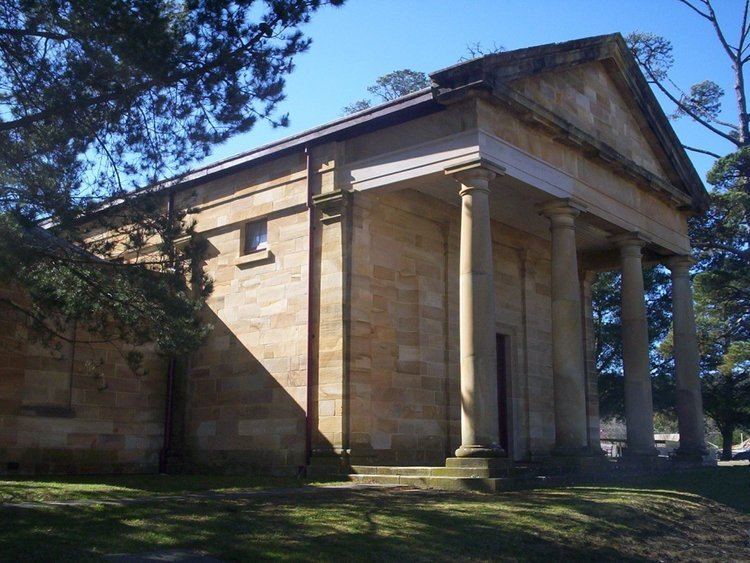 | ||
Courthouses in New South Wales were designed by the Colonial Architect, later known as the Government Architect.
Contents
History of New South Wales Local Courts
The first New South Welsh Charter of Justice of 2 April 1787 created the power to convene a criminal court. This was the Court of Criminal Jurisdiction. The first Charter of Justice also created a Court of Civil Jurisdiction to hear and determine in a summary way all pleas relating to real and personal property, debts, contracts, grant of probates and to administer intestate estates. Magistrates appointed in the early years of the colony were unpaid honorary appointments. The first paid magistrate was D'Arcy Wentworth appointed in 1810.
Local Courts were known as Courts of Petty Sessions. Such courts had originated in England in the fourteenth century. Although during the early years of the colony references are made to Courts of Petty Session sittings by Magistrates, it was not until 1832 that Courts of Petty Sessions were formally established in New South Wales.
The first Courts of Petty Sessions were proclaimed in the Government Gazette of 3 October 1832. The proclamations gave notice that Courts of Petty Sessions were to be held at the following locations: Sydney (Police Office and Hyde Park Barracks), Inverary, Parramatta, Bathurst, Windsor, Newcastle, Penrith, Paterson's Plains, Liverpool, Maitland, Campbelltown, Darlington, Wollongong, Invermein, Stonequarry Creek, Port Stephens, Bong Bong or Berrima, Port Macquarie, Goulburn Plains.
More than three hundred courthouses have been built in New South Wales since settlement. The oldest existing Local Court in New South Wales is the Local Court at Windsor which was built in 1821.
In 1985 the Local Courts Act abolished Courts of Petty Sessions by changing their name to Local Courts and appointments are now made under that Act. There are currently 160 Local Courts established throughout New South Wales and 130 Magistrates appointed.
Current role
Local Courts in New South Wales have jurisdiction to deal with:
Local Courts also provide the following services:
Courthouses built from 1862–1890
During the period that James Barnet was the Colonial Architect, his office was responsible for designing and building 130 courthouses across New South Wales. Some of these replaced existing courthouses where it was deemed the building had been outgrown.
